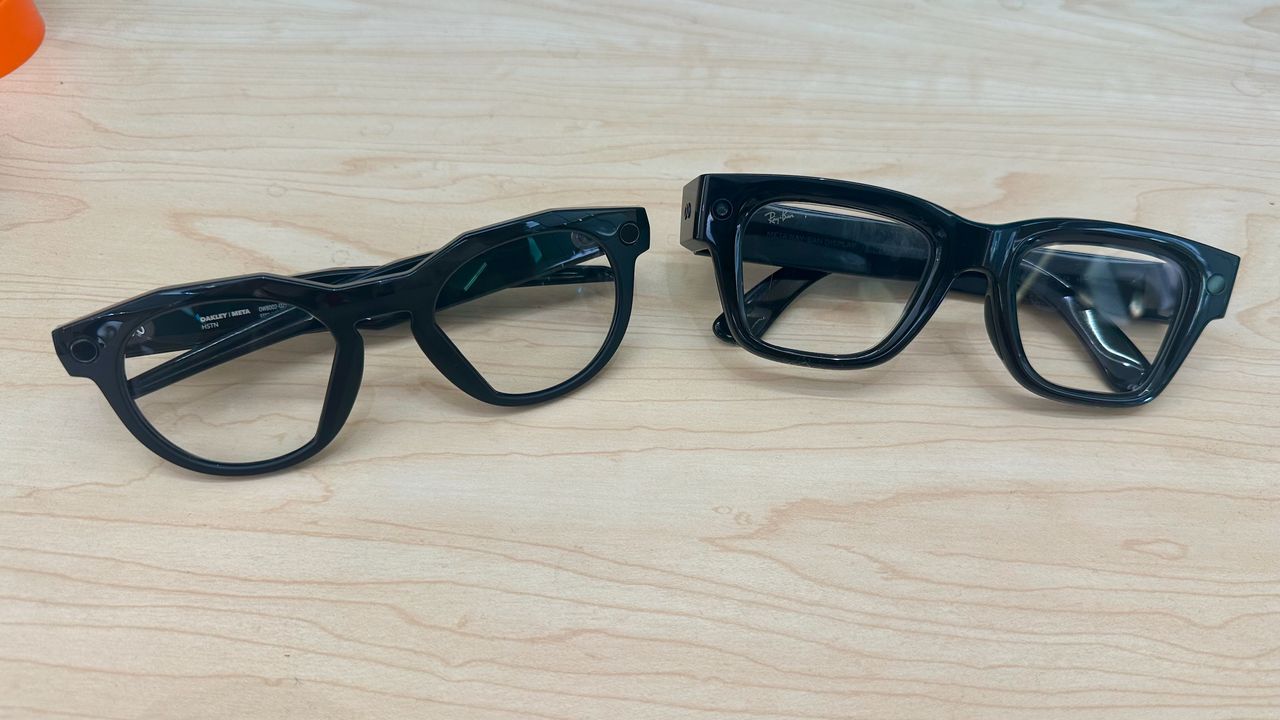
Wear-able
Meta Ray-Ban Display Glasses represent some of the finest technology available today. Featuring an in-lens display and a unique neural gesture band, there's no pair of smart glasses on the market today that can do what these do.
Pros
- Classic Wayfarer style
- In-lens display
- Neural gesture band included
- Can run apps, navigation, etc.
- Camera viewfinder with zoom capability
- Built-in AI and speakers
Cons
- Expensive
- Fewer video recording options
- Display only in the right lens
- Thicker frames
Style in the name
Ray-Ban Meta Gen 2 sport tons of style options, colors, and lenses, making them the better style choice. They're much less expensive, have longer battery life, and more camera options, plus higher-quality 3K video recording. Prescription lenses are also easier to get and support a wider range.
Pros
- Much lighter
- 3K/30 or 1080p/60 video recording
- Up to eight hours of battery life
- More style and lens options
- Don't have to make an appointment to purchase
Cons
- Prescription range is still somewhat limited
- Less capable
- No display
- No support for neural band
Meta's latest release of Ray-Ban smart glasses now comes in two main options: with or without a display. The Ray-Ban Meta Gen 2, released in September 2025, are the same AI glasses everyone knows and loves, now with longer battery life, improved camera quality, and more styles to choose from.
But the newest kid on the block, Meta Ray-Ban Display Glasses, does exactly what it says on the tin. Instead of being purely audio-only, like the Ray-Ban Meta Gen 2, the newer Meta Ray-Ban Display Glasses feature a nifty display in the right lens that works much like a smartwatch. They're also more than twice the price of Ray-Ban Meta Gen 2, so while they feel like the future on your face, there's a price to pay to get there.
So, do you need the most expensive pair of smart glasses Meta offers, or would it make more sense for you to save some money and opt for the tried-and-true AI glasses? Let's find out.
Meta Ray-Ban Display Glasses vs Ray-Ban Meta (Gen 2): Specs
Category |
Meta Ray-Ban Display |
Ray-Ban Meta Gen 2 |
|---|---|---|
Styles |
Wayfarer-inspired Standard and large sizes |
Wayfarer, Headliner, Skyler Standard and large sizes |
Colors |
Shiny Black, Shiny Sand |
Shiny Cosmic Blue, Shiny Mystic Violet, Shiny Chalky Gray, Shiny Asteroid Grey, Matte Black, Shiny Black (style dependent) |
Lenses |
Transitions, Prescription (-4.0 to +4.0) |
12 colors (style dependent), clear, Transitions, polarized, prescription (-6.0 to +4.0) |
Display |
20 deg FOV monocular display in the right lens 600 x 600 pixels, 42PPD, 90Hz, 5000-nit with auto brightness, one-way private viewing |
N/A |
Camera |
12MP Ultra-Wide |
12MP Ultra-Wide |
Photo resolution |
3024 X 4032 pixels (Portrait only) |
3024 X 4032 pixels (Portrait only) |
Video resolution |
1080p+ at 30FPS (1440 x 1920 resolution) |
1200p at 60FPS 1440p at 30FPS 3K at 30FPS |
Speakers |
2X open ear speakers |
2X open ear speakers |
Microphones |
Custom 6-mic Array |
Custom 5-mic Array |
Storage |
32GB; about 1000 photos, 100 30-second videos |
32GB; about 500 photos, 100 30-second videos |
Connectivity |
Wi-Fi 6; Bluetooth 5.3 |
Wi-Fi 6; Bluetooth 5.3 |
Compatibility |
iOS; Android |
iOS; Android |
Weight |
69g |
52g |
Durability |
IPX4 |
IPX4 |
Battery |
Up to 6 hours per charge 5 hours continuous audio playback or voice calling |
Up to 8 hours per charge 5 hours continuous audio playback or voice calling |
Charging (glasses) case |
30 additional hours worth of charge |
48 hours worth of charge |
Charging speed |
50% in 20 minutes |
50% in 20 minutes |
Neural gesture band |
Included in box |
N/A (not compatible) |
Meta Ray-Ban Display Glasses vs Ray-Ban Meta (Gen 2): Design, style, and lenses
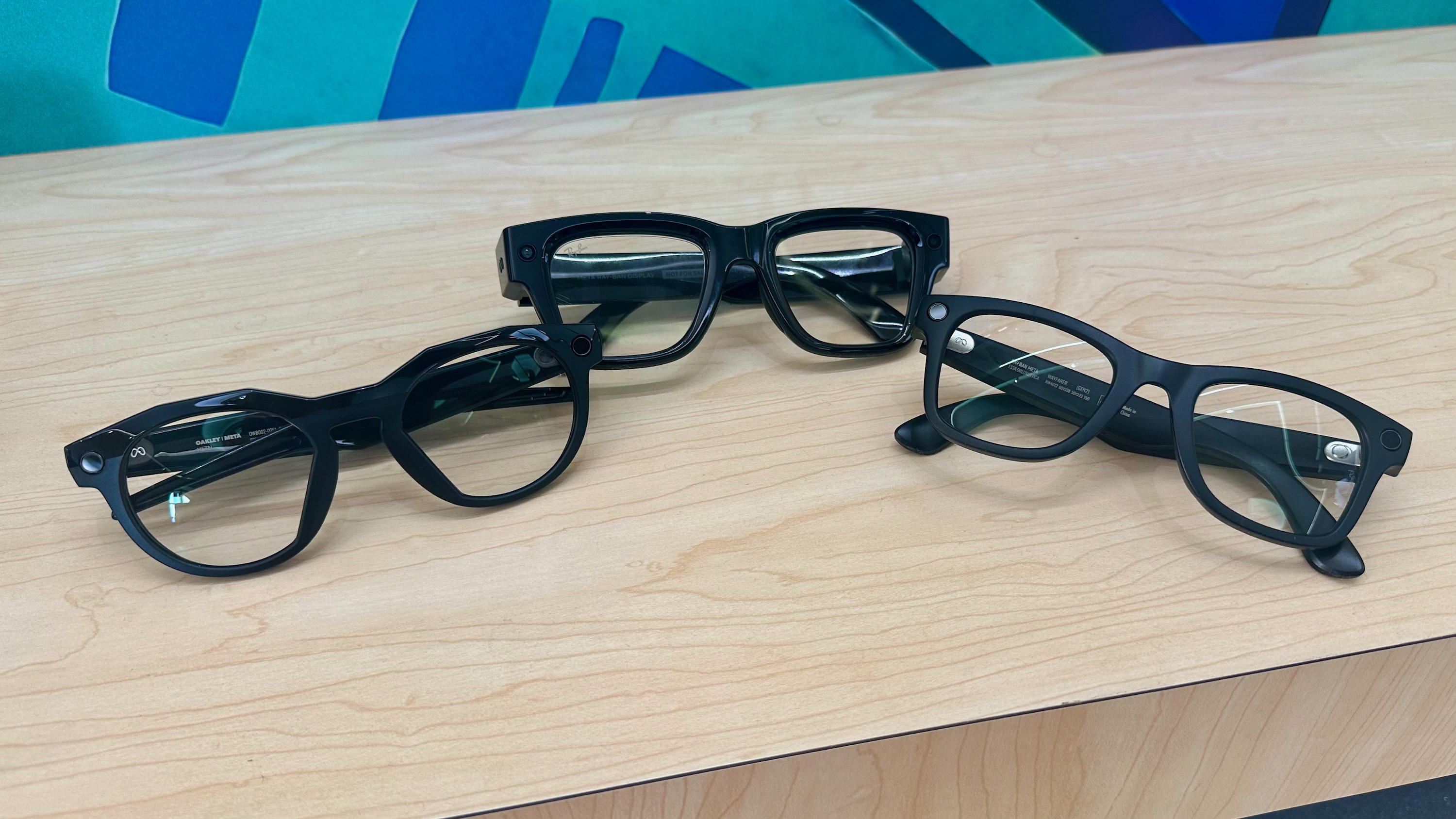
As you can see from the image above, Meta did an exemplary job of keeping Meta Ray-Ban Display Glasses from being inordinately thicker than Ray-Ban Meta Gen 2 or Oakley Meta HSTN smart glasses. All three glasses share similar DNA, from the camera and LED modules flanking the lenses to the speakers built into the temple arms.
However, Ray-Ban Meta Gen 2 offers a significantly larger number of styles and colors than other pairs of Meta AI glasses.
Style |
Ray-Ban Meta Wayfarer (Gen 2) |
Ray-Ban Meta Skyler (Gen 2) |
Ray-Ban Meta Headliner (Gen 2) |
|---|---|---|---|
Frame colors |
Shiny Cosmic Blue, Matte Black, Shiny Black |
Shiny Mystic Violet, Shiny Chalky Gray, Shiny Black |
Shiny Asteroid Grey, Matte Black, Shiny Black |
Lens colors |
Clear to Sapphire Transitions, Clear, Green, Gradient Graphite, Clear to Graphite Green Transitions, Clear to Grey Transitions |
Green, Gradient Graphite, Clear to Sapphire Transitions, Clear to Graphite Green Transitions, Clear, Clear to Amethyst Transitions, |
Clear to Emerald Transitions, Clear, Green, Gradient Graphite, Clear to Graphite Green Transitions, Clear to Sapphire Transitions |
Meanwhile, Meta Ray-Ban Display Glasses are available in only two colorways: Shiny Black and Shiny Sand, and all come with Transitions lenses built in. You can't choose any colors for Meta Ray-Ban Display lenses.
Meta Ray-Ban Display Glasses offer only -4.0 to +4.0 prescription lens options, and these can only be purchased when you order the glasses. They'll cost you an additional $200 to get prescription lenses (making the total $999), and there's no way to swap out lenses once they've been fused with the display.
Ray-Ban Meta Gen 1 users have been able to obtain additional prescription lenses from reputable aftermarket companies like HonsVR at an affordable price. While those aren't available for the Gen 2s just yet, we expect wider availability soon. Plus, Ray-Ban Meta Gen 2 offers a wider -6.0 to +4.0 prescription range.
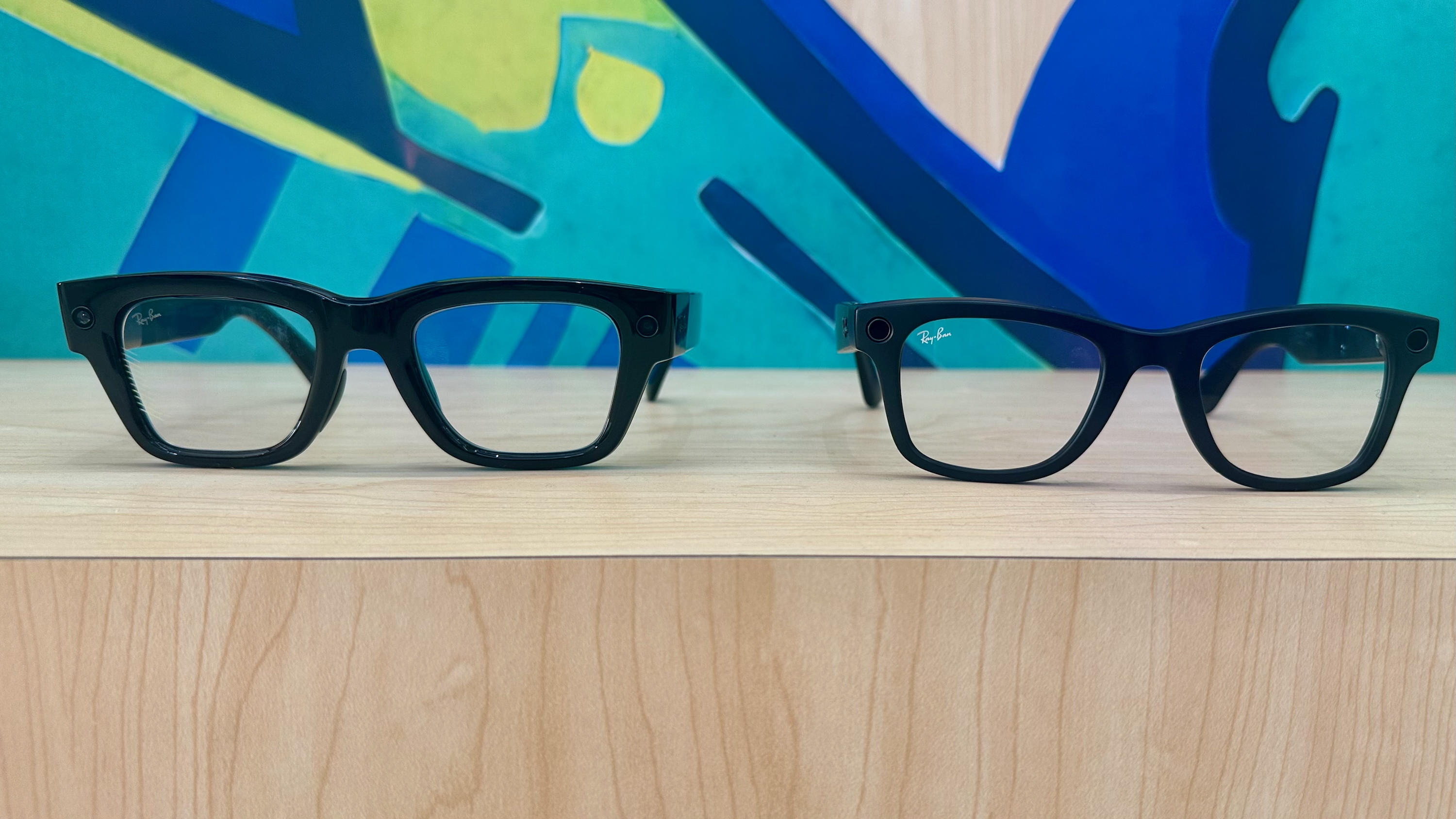
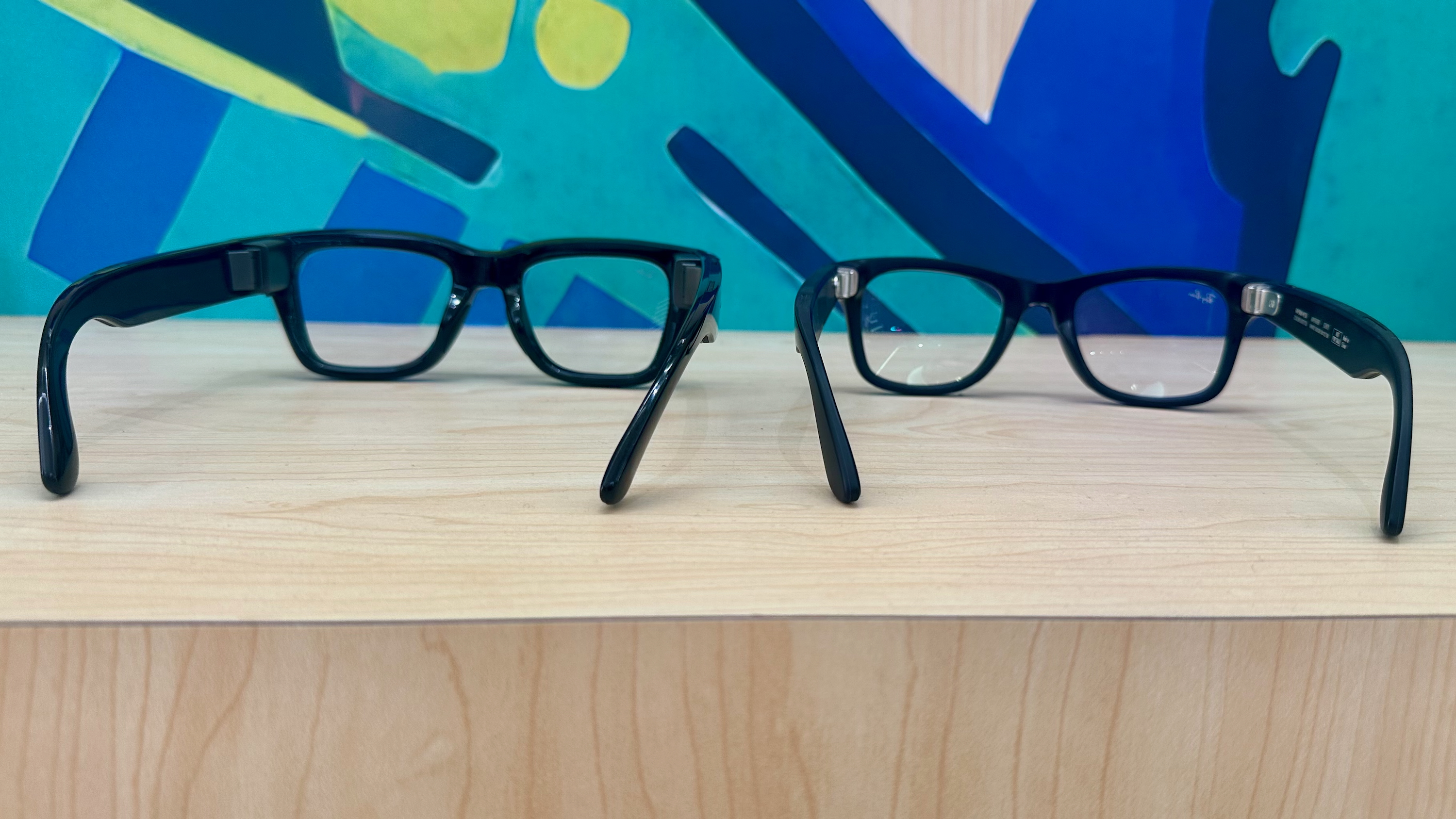
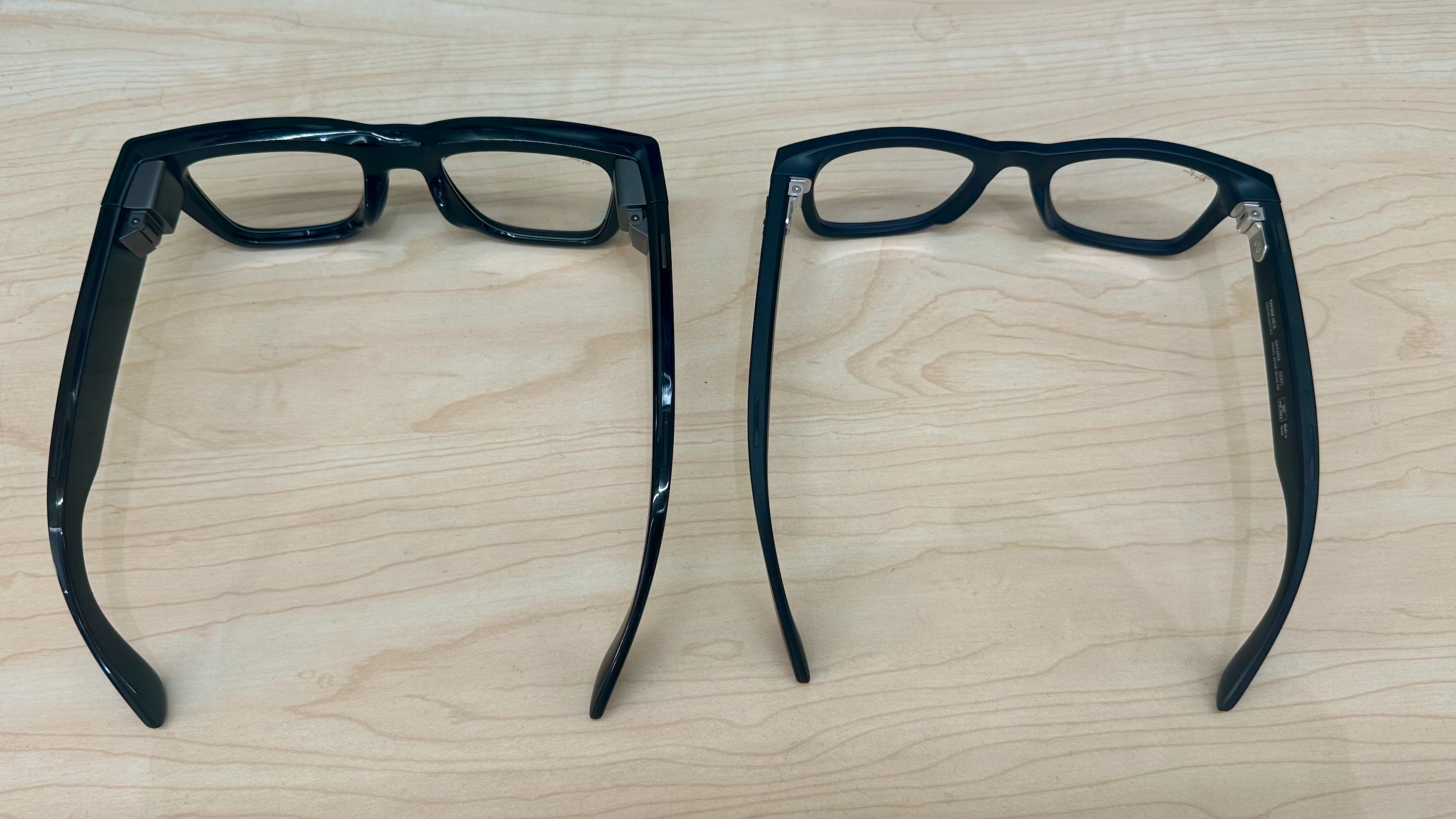
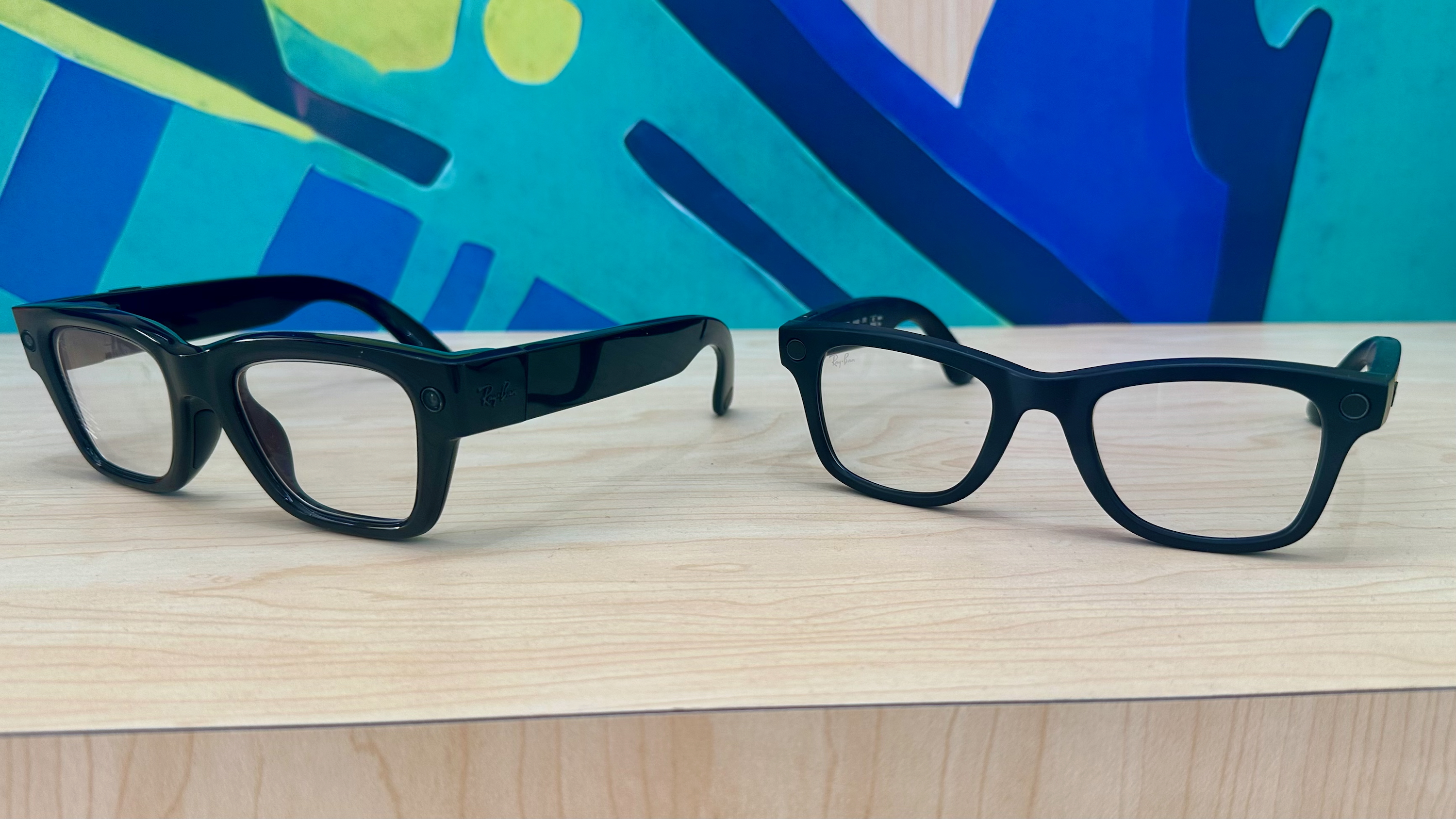
Meta Ray-Ban Display Glasses are thicker than the Ray-Ban Meta Gen 2, but, as I noted before, they're not excessively thick and don't look out of place. Thicker frames are already a popular style option for regular glasses, so they don't look out of place. This appears to be supported by some social media posts.
Meta Ray-Ban Display Glasses vs Ray-Ban Meta (Gen 2): Features and camera

Meta AI features are built into all of Meta's AI glasses and are used to activate any function supported by the glasses. The Ray-Ban Meta Gen 2 is entirely reliant on voice interaction for nearly all of its functions, but it features a physical camera shutter button on the top of the right arm, as well as a touchpad on the right arm that can be used to adjust volume, play or pause music, and more.
Meta Ray-Ban Display Glasses feature these same inputs in addition to a neural band that's used to detect gestures made with your hands. The cloth band fits comfortably on the wrist you'll primarily use to interact with the glasses' menus and can understand your movements via electrical impulses in your wrist muscles.
This allows Meta to open up an entire operating system's worth of functionality for Meta Ray-Ban Display Glasses, including the ability to perform tasks like zooming in with the glasses' camera without needing to touch your glasses or use your voice. You can even reply to messages by "writing" on a table with your hand, or perform fun actions like pinching and rotating your fingers to adjust volume or zoom in and out of the camera.
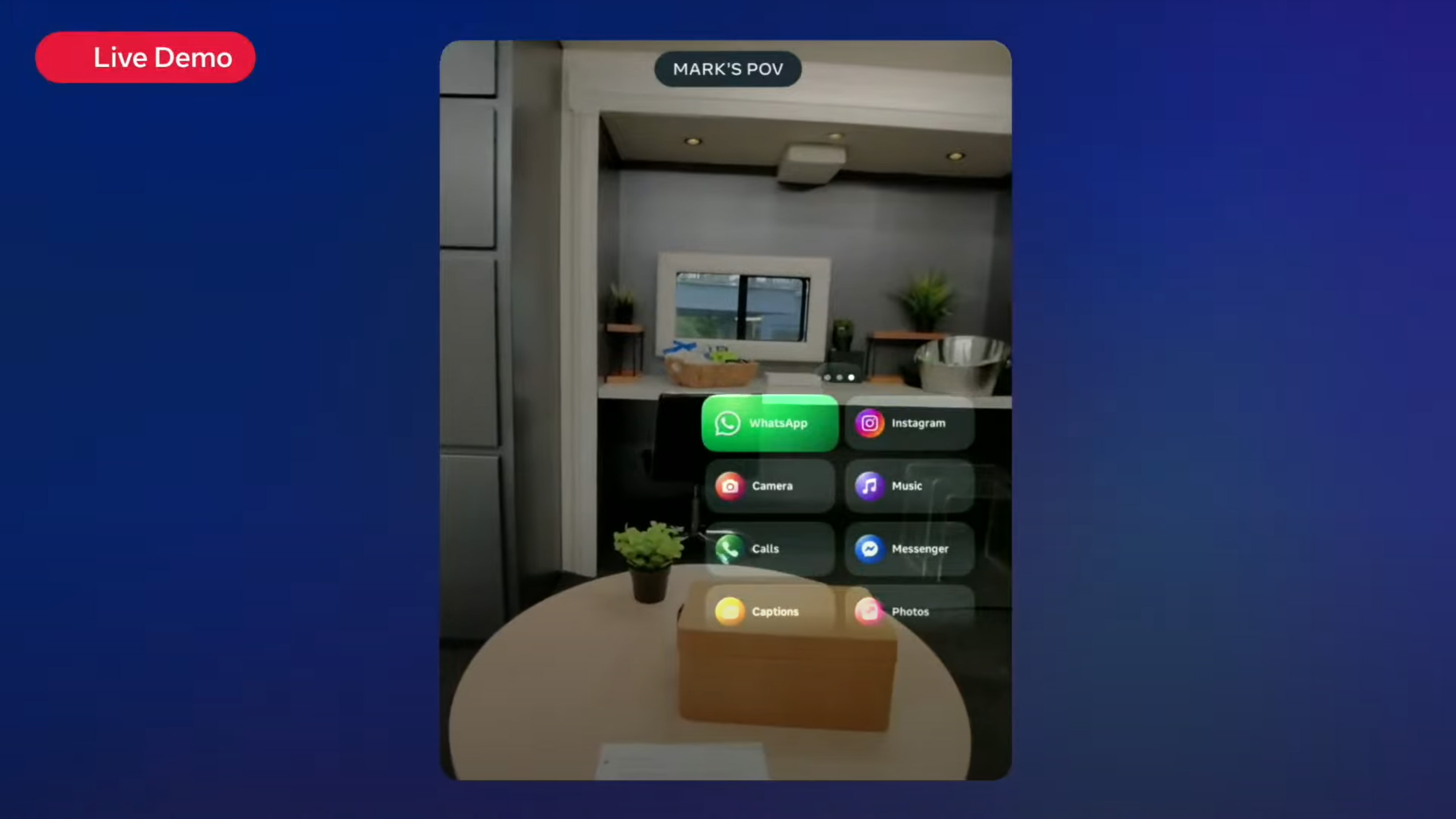
The UI on the Meta Ray-Ban Display Glasses falls somewhere between a smartwatch and a smartphone, offering numerous ways to perform everyday tasks that are too cumbersome for a smaller smartwatch display. Since it's on your face, Meta says it allows you to be more present with people in the room, rather than looking down at your watch or phone to check notifications or messages.
The display in Meta Ray-Ban Display Glasses enables visual use of Meta AI in a way that's not possible with the audio-only Ray-Ban Meta Gen 2s. While both types of glasses can perform many similar functions — such as taking photos or videos, providing live translation, playing music through the speakers, or using AI to identify objects in front of you — the addition of a display enables far more interactive elements.
The display on the Meta Ray-Ban Display Glasses features a convenient accessibility feature called Live Captions, which utilizes the camera and AI to identify the people you're talking to, then displays closed captions on the glasses' display. Since no one can see the display from the outside, these captions are entirely private to you and can be great for noisy environments or people who are deaf or hard of hearing.
Meta Ray-Ban Display Glasses also have a visual viewfinder for the cameras, while Ray-Ban Meta Gen 2 users will have to just click the button and hope the picture is lined up right. Ironically, though, Ray-Ban Meta Gen 2 has a more capable camera that can record at up to 3K resolution or at 1080p/60FPS. That's an upgrade over the 1080p/30FPS camera in Meta Ray-Ban Display Glasses.
Meta Ray-Ban Display Glasses vs. Ray-Ban Meta (Gen 2): Which should you buy?
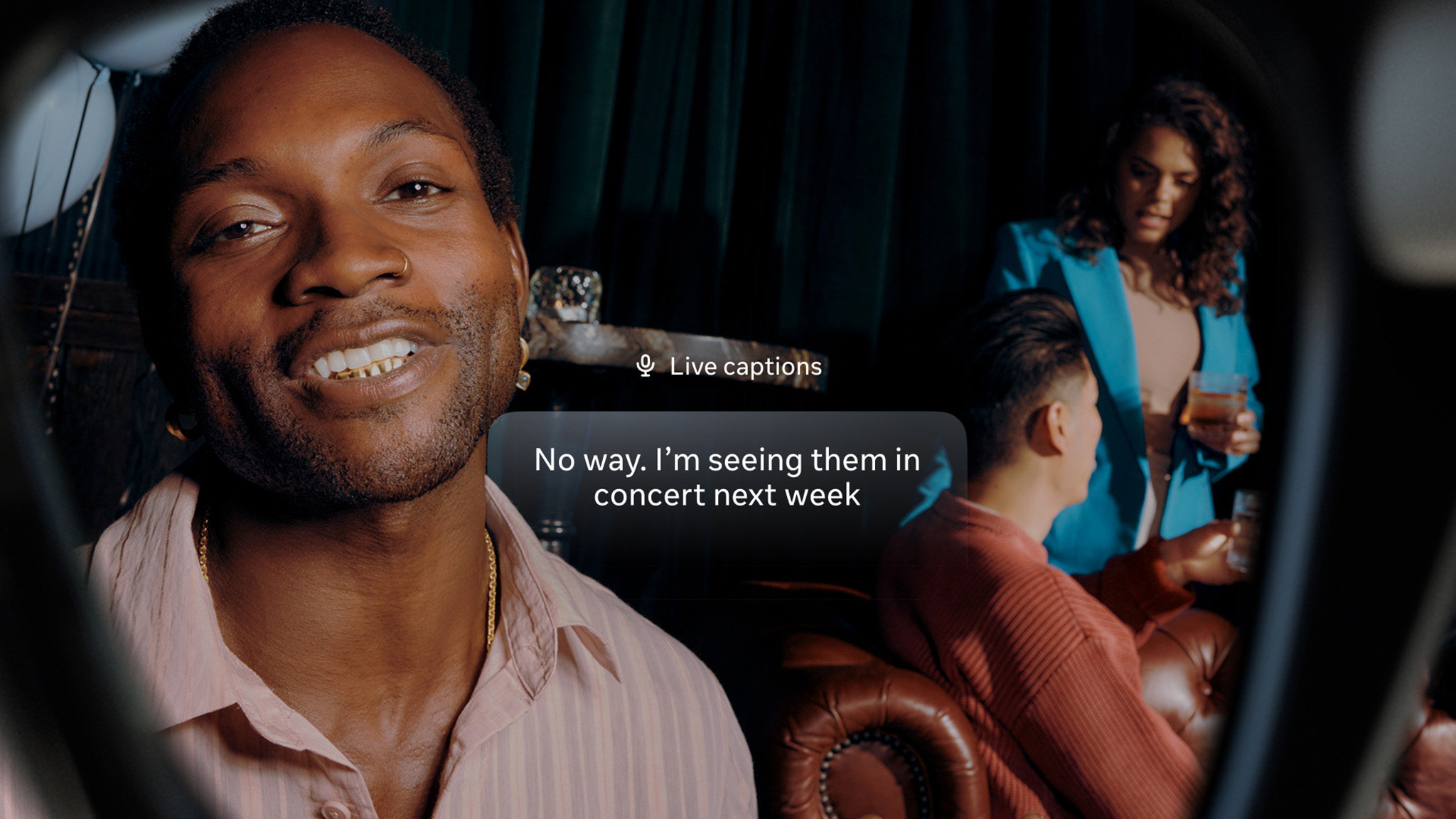
Content creators will likely want to choose the smoother or higher-resolution video on the Ray-Ban Meta Gen 2s, as the first-person perspective and ultrawide angle are able to capture everything in front of you without an issue. Those looking for more functions or a legitimate replacement for a smartwatch may want to shell out more for Meta Ray-Ban Display Glasses.
If Meta Ray-Ban Display Glasses sound appealing, head over to the demo scheduler, type your address in the box, and head to the store when it's your time. Meta is currently only selling these in-store after a physical fitting and demo, and supplies appear to be limited through the holidays. Otherwise, Ray-Ban Meta Gen 2s are readily available at most local electronics stores, eyeglasses stores, Amazon, or Meta's own website.
Next-generation smart glasses
Meta Ray-Ban Display Glasses sports a private in-lens display that helps you keep your phone in your pocket and eyes off your content. Plus, the included neural band lets you interact with the glasses via discrete hand movements, delivering private computing on your face.
AI glasses you'll love
Ray-Ban Meta Gen 2 aren't just about style, they're also packed with capability. With 8-hour battery life, 3K camera quality, over-the-ear speakers, and Meta AI built in, these glasses will add more fun to your day and help you capture the moment with your hands free.
Pros
- Much lighter
- 3K/30 or 1080p/60 video recording
- Up to eight hours of battery life
- More style and lens options
- Don't have to make an appointment to purchase
Cons
- Prescription range is still somewhat limited
- Less capable
- No display
- No support for neural band







